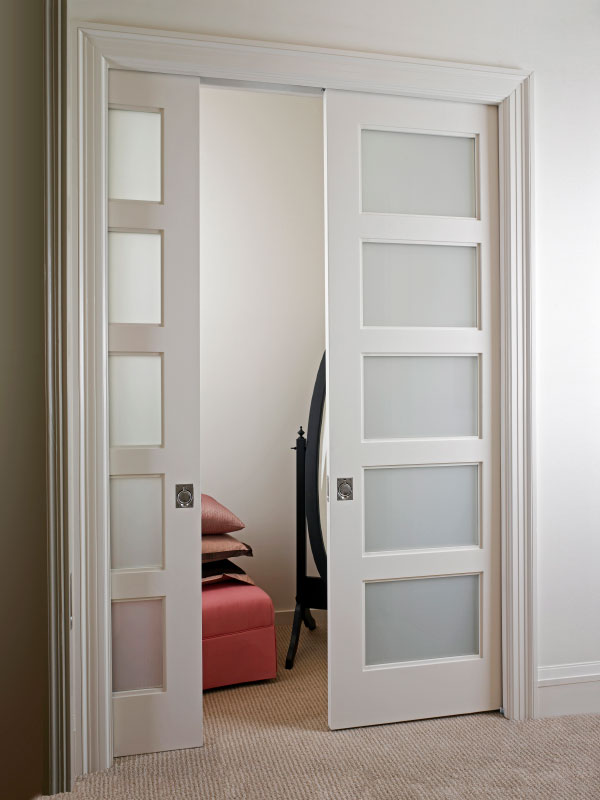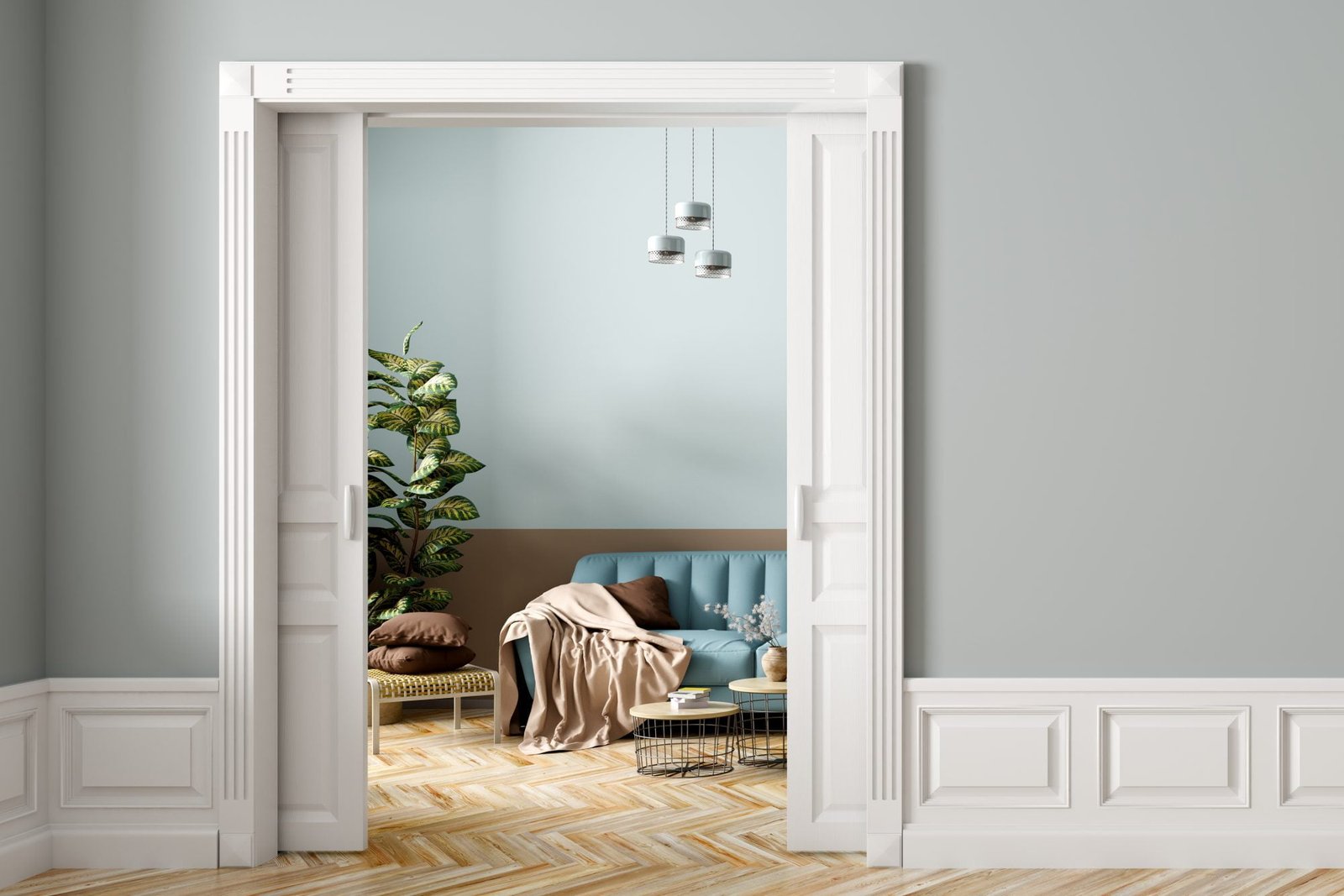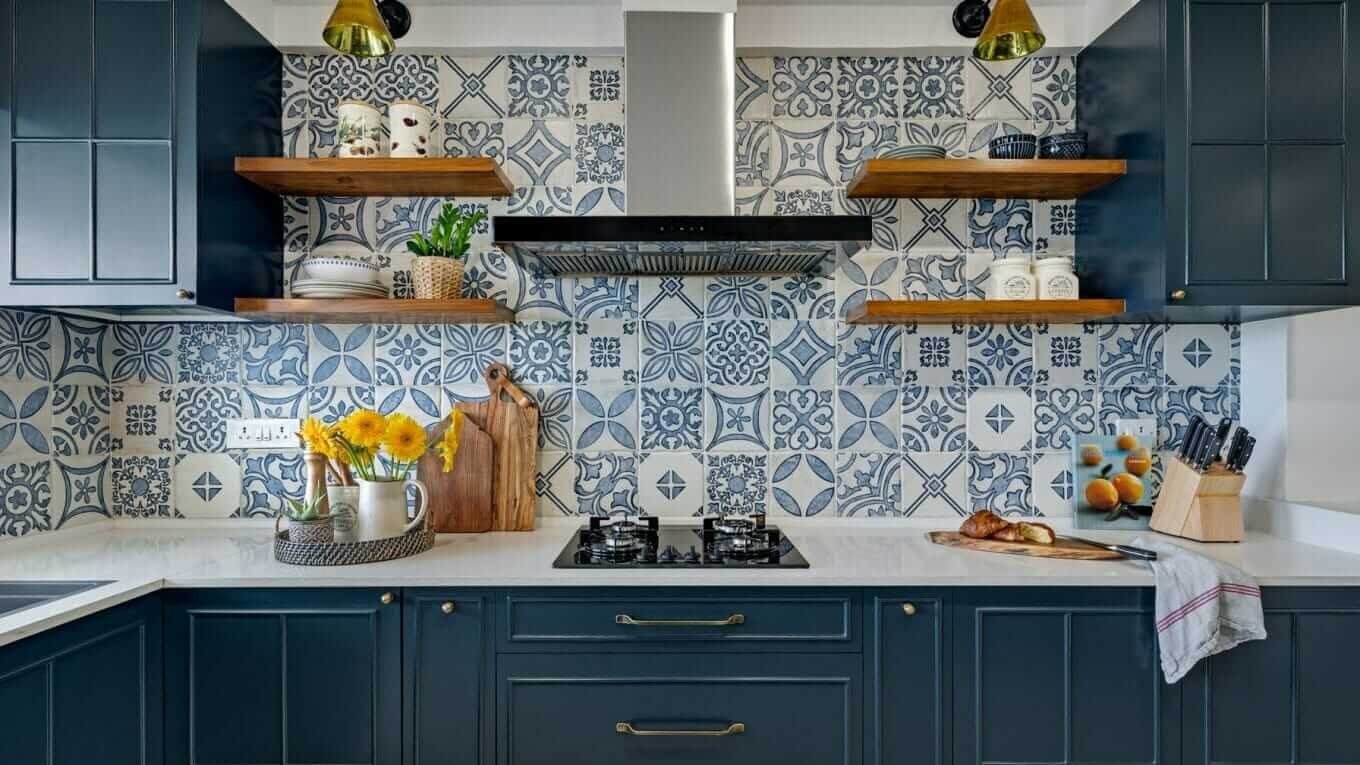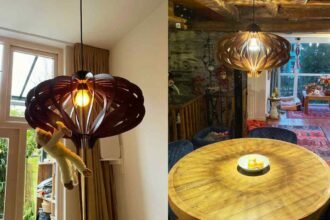Before making a final decision, it is important to think about both the advantages of normal doors and the disadvantages of pocket doors. When opened, conventional hinged door swings open to the side, whereas a pocket door glides open along the wall horizontally. Rollers mounted on an overhead track allow a pocket door to slide into a “pocket” cut into the wall on either side of it rather than swinging out into the room.
When it is open all the way, a pocket door blends in almost completely with its surroundings. This design solves a common issue with conventional hinged doors, which is that they require a certain amount of clearance in order to swing open. When connecting spaces like libraries, dining rooms, and living rooms during the Victorian era, pocket doors were frequently employed since they were considered to be a fashionable manner of minimizing the amount of space required.
When you want to add solitude and sophistication to a room but don’t have the space for a swinging door, pocket doors are an excellent alternative that you may use instead of standard swinging doors.
What is Pocket Door?
When a pocket door is completely opened, it slides into a pocket that has been cut into the wall on the opposite side of the opening. Hinged doors are not an option due to aesthetic concerns or a lack of available space, however, pocket doors are an option that can be exploited. They can move along rails or guides that have been laid out on the floor, or they can roll along rollers that have been hung from the ceiling.
Where Pocket Doors Came From?
The 1850s marked the beginning of the era that saw the first appearance of pocket doors in both the United Kingdom and the United States. In the 1880s, there was an increase in their popularity as a result of the development of new techniques that made the process of setting them up simpler and more time-efficient. However, by the middle of the 1920s, swinging doors had begun to go out of favor in favor of the more conventional form of swinging doors.
Also See: Find Garage Door Repair Near Me
Types of Pocket Door
A typical pocket door consists of a panel that is solid and measures 36 inches wide. This panel slides into the wall on a track. There are more designs that can be chosen in addition to this basic single-pocket door. A pocket door system also allows for the installation of attractive French pocket doors, which may be used for bigger openings. Double pocket doors can be used for larger apertures.
Double Pocket Door
The number of doors is the sole thing that differentiates a double pocket door from a single pocket door in a pocket door system. A twin pocket door is really made up of two independent doors that are able to slide into corresponding holes in two different walls. When closed, the pocket doors function similarly to elevator doors in that they extend from the walls and meet in the middle of the door opening.
In situations when there is not enough space on the interior for swinging French doors, it is possible to install double pocket doors to allow quick access to the dining and living rooms of the home. There is a wide selection of both materials and finishes to choose from when it comes to double pocket doors.
Only passageways that have an adequate amount of wall space, as well as passageways that do not have any electrical outlets or light switches on both sides, are able to support twin pocket doors.
Pocket French Doors
When opened, double pocket doors slide into the wall on each side of the opening, whereas French pocket doors have two door panels that slide into the wall on opposite sides of the opening, but meet in the middle when the door is closed.
A French pocket door can be installed in a door opening that is as narrow as 36 inches, however, twin pocket doors, which can be used to disguise massive entryways, can only be installed in door openings that are at least 48 inches wide. This particular form of pocket door can be crafted out of virtually any material, including glass.
Adding French doors to a foyer and having them drop into a wall pocket is an elegant approach to modernizing the space. People who wish to install a pocket door but don’t have enough wall space on one side, such as for a 36-inch door, can benefit from them as well because they make it easier.
When compared to the panels of a standard pocket door, the panels of a French pocket door have a narrower width, which means that just a little more than 18 inches of wall space are required on either side of the doorway.
What dimensions do you propose for a pocket door?
The typical height range for a medium-sized pocket door is between 59 5/8 and 75 3/8 inches, and the width range is between 82 14 and 82 14 inches. Under these conditions, the dimensions of the holes will be anywhere in the range of 27 inches by 7 34 inches to 35 inches by 78 34 inches. Alternatively stated:
In what range does the price of a brand-new pocket door fall?

The cost of installing pocket doors in a fresh new building is estimated to range between $600 and $1,000. It is anticipated that the overall cost of these items as part of a refurbishment project will range anywhere from $1,001 to $3,500. These prices take into account the cost of both the supplies and the labor. These doors are built into the wall, so rather than being hung on hinges and swinging open, they enter through a concealed entrance.
Pros and Cons of Pocket Door
There has been something of a renaissance of the pocket door, which is especially handy in tiny buildings like condos and townhouses, where every square inch counts especially when it comes to privacy. However, there are a number of circumstances in which using such entrances is not the most advantageous choice. Consider the following list of pros and cons before deciding whether or not to install this type of door:
Pros
- Pocket doors, on the other hand, slip neatly out of the way when not in use, in contrast to traditional doors, which swing outward and take up unneeded space on the floor.
- Because pocket doors are installed into walls, the wall’s frame needs to be sufficiently large to accommodate the door’s full insertion into the wall pocket. Pocket doors are also known as flush doors. Additionally, none of the wall’s fixtures—whether they be switches, outlets, or pipes—may be installed in that particular area.
- It is not necessary to secure pocket doors to the ground because they are hung from a track that is installed in the ceiling. As a result of this, they are able to section off different zones inside a space without obstructing the flow of foot traffic with a threshold or floor track.
Cons
- Pocket door hardware must be narrow to fit through the wall’s construction. One finger may retract the door’s exposed latch to close it. The manual motion may be difficult for some.
- Pocket doors can have locks, although utilizing them might be difficult due to their design. Privacy lock sets for double pocket doors are rare and expensive.
- Pocket door hardware, including tracks, is hidden behind the wall. Limited access makes repairs or replacements difficult. Double pocket door hardware requires a longer track to accommodate two door panels, making repairs more difficult.
How Pocket Doors Work
Any pocket door installation must have a pocket door frame system, also known as a cavity slider. This is the door’s supporting structure. In most cases, a pocket door frame system will be built to be able to slide into a conventional door opening that is double the width. It is imperative that they serve both as a pocket and a track for the door’s movement into the aperture in order to fulfill their dual duty.
The pocket is the hollow wall that forms half of the frame system and is responsible for retaining the door slab even when the door is open. This section of the wall can serve as a suitable replacement for the broken section. After installation, pockets are given their final appearance by being completed with drywall, trim, and paint. After then, it fuses completely with the wall.
The frame system is finished off with the track. Following its exit from the pocket, the rail moves across the door header. The slab door is supported by a roller carriage that travels down a track and is suspended below it.







